We pride ourselves on helping our clients with all their business challenges. Our partners are available to discuss with you any of the issues you are facing. Please don’t hesitate to reach out to us at any time. We are here to help.
On April 8, 2020, the Government of Canada provided an update on the 75% wage subsidy for eligible employers initially announced by the Prime Minister on March 27, 2020. This program is being referred to as the Canada Emergency Wage Subsidy (“CEWS”).
The CEWS program is in addition to the 10% wage subsidy which was included in Bill C-13, COVID-19 Emergency Response Act. However, generally the 10% wage subsidy reduces the amount available under the CEWS program. Our summary of the 10% wage subsidy can be found here.
Draft legislation to enact the CEWS program has not yet been released. Details of the program were initially released on April 1, 2020 and updated on April 8, 2020. We note that considerable ambiguity in the program remains. As such, the comments in this memo are subject to change.
The purpose of the CEWS program, according to the Government, is to “prevent further job losses, encourage employers to re-hire workers previously laid off as a result of COVID-19, and help better position Canadian companies and other employers to more easily resume normal operations following the crisis.” The Government’s April 8, 2020 release can be found here.
Eligible Employers
Eligible employers include the following:
- Individuals;
- Taxable corporations;
- Non-profit organizations;
- Registered charities; and
- Partnerships in which all partners are eligible employers.
Eligible employers must also have seen a drop in revenue of at least 15% in March 2020, 30% in April 2020, and/or 30% in May 2020 to qualify for an eligible period for which the CEWS may be claimed. If an employer does not qualify for a specific period, this does not preclude that employer from qualification in the other periods. The determination of qualification is as follows:
|
Eligible Period |
Claiming period |
Reduction in revenue required |
Reference period for eligibility |
|
1 |
Mar 15 to Apr 11 |
15% |
March 2020 over either:
|
|
2 |
Apr 12 to May 9 |
30% |
April 2020 over either:
|
|
3 |
May 10 to Jun 6 |
30% |
March 2020 over either:
|
Revenue for the purpose of the CEWS is an employer’s revenue in Canada earned from arm’s-length sources. Revenue is to be calculated using the employer’s normal accounting method and excludes revenues from extraordinary items.
In determining the decrease in revenue for March, April and May 2020, a comparison between either the corresponding month in 2019 or the average revenue for January and February 2020 can be used. However, the comparison method chosen for each period must be used consistently.
Unlike the 10% wage subsidy included in Bill C-13, there is no requirement with respect to the size of the employer. The subsidy is available to small, medium and large businesses if they are not a public body. Public bodies generally include municipal and local governments, Crown corporations, wholly owned municipal corporations, public universities, colleges, schools and hospitals.
Subsidy Amount
The CEWS will provide employers with a subsidy for any eligible employee based on eligible remuneration paid between March 15 and June 6, 2020 equal to the greater of:
- 75% of the remuneration paid, up to a maximum benefit of $847 per week; and
2. The lesser of:
a) The amount of remuneration paid, up to a maximum benefit of $847 per week; and
b) 75% of the employee’s pre-crisis weekly remuneration.
An employee’s pre-crisis weekly remuneration is the average weekly remuneration that the employee received between January 1 and March 15, 2020, excluding any seven-day period in which the employee did not receive remuneration.
Eligible employers are expected to make their best effort to top-up the employee’s pay to pre-crisis levels.
Eligible Employee
An eligible employee includes an individual employed in Canada but excludes “employees that have not been without remuneration for more than 14 consecutive days in the eligibility period.”
This concept has created much confusion and debate. The purpose of the exclusion is to restrict an employer from claiming the CEWS benefit where an employee has claimed the Canadian Emergency Response Benefit (“CERB”) during the same period to prevent the duplication of benefits.
Refund of Payroll Contributions
If an employee is being paid by an eligible employer but does not perform any work for the employer for the week, the employer may claim a refund of the employer portion of Employment Insurance, Canada Pension Plan, Quebec Pension Plan, and/or Quebec Parental Insurance Plan premiums. There is no maximum amount applicable to this benefit.
Please note that this benefit does not apply to employees who are working and receiving remuneration for that work. In this case, the ordinary rules will apply.
Applying for CEWS Benefits
Applications will be submitted through the Canada Revenue Agency’s My Business Account portal, as well as through a web-based application. More details will be available when the legislation is finalized.
Penalties
Employers who claim CEWS benefits but are found not to have met the eligibility criteria will be required to repay any benefits received. In addition, where an ineligible claim was made and that claim was abusive, a penalty of 25% of the benefit received will be levied and up to five years in prison.
Our views on the CEWS
While we welcome any news that assists businesses in this unprecedented and challenging crisis, we feel the CEWS requires complex, vague and challenging eligibility criteria. It also ignores the most critical issue facing most businesses – cashflow.
The CEWS benefit is a refund of previously paid remuneration. Amongst the other criteria listed above, a corporation with a significant loss in revenue is required to have paid, in cash, eligible remuneration to employees before any benefit can be claimed. We expect the application process will open in the coming weeks and that it will take several more weeks for the Canada Revenue Agency to process these claims and make payment.
Therefore, we urge business owners to review their cashflow requirements over the coming months to determine if sufficient funds will be available to continue covering operating costs, including amounts paid to employees, with the anticipation that benefits under the CEWS program will likely not be received until at least May or June 2020.
Posted in COVID-19


